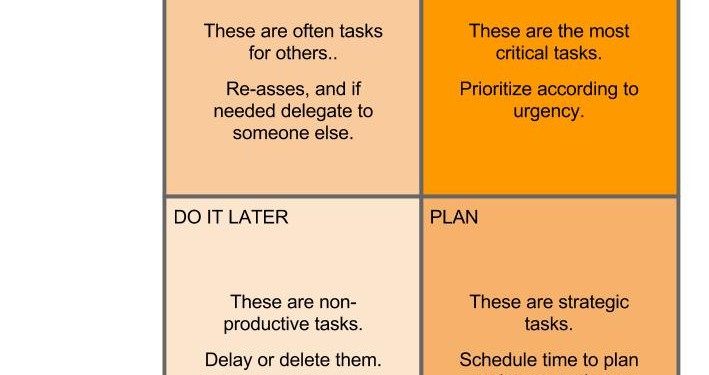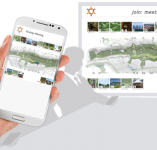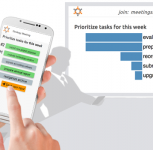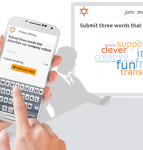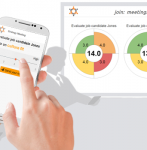You have probably participated in icebreaker activities as part of meeting warm-ups , but have you thought about how different ice breaker activities work best for different situations?
For example, do the meeting participants already know each other, or is this the first time most of them meet? If they know each other, would they benefit by getting to know more about each other, like what their hobbies are or what they do in the company? What kind of people will participate in the ice breaker activity? Perhaps it’s a marketing meeting consisting of mostly outgoing hipsters, or it’s an IT crowd with an abundance of introverted geeks, each with their own view of what makes for a fun ice breaker activity.
Key criteria for icebreaker activities:
- Make it fun:Above all, ice breakers must be fun. You donʻt want to start out a meeting with a dull ice breaker, or one that is inane, or, in a word, “lame.” If you do, you will have to scramble to regain the meeting momentum you want to achieve.
- Engage everyone: Make sure your ice breaker activity involve everyone. No bystanders. No introverted personality types left feeling unincluded.
- Build relationships: The main purpose of icebreaker activities is for participants to create or deepen relationships with each other.
- Keep it simple: Don’t make your ice breaker activities too complicated. With too many props or too many rules you can easily confuse and frustrate participants.
- Keep it safe: Make sure your ice breaker activities don’t require any real physical demands or cause emotional stress. Make everyone feel safe.
Adapt your choice of ice breaker activity to the type of group you are addressing. You may have a room full of hipsters who love crazy creative ice breaker activities, or a group of techie introverts who may open up more when collaborating on a problem solving icebreaker activity.
4 Categories of icebreaker activities:
- First introductions: If it is the first time most, or all, of the participants meet, you want to focus the ice breaker activity on introducing them to each other.
- Energizing: Ice breaker activities are great for kick-starting a meeting or re-energizing the group after a break or a slow segment of the meeting agenda.
- Relationship building: If your participants already know each other you can use ice breaker activities to help them break down assumptive barriers, and get to know each other even better.
- Team building: By applying ice breaker activities to get meeting participants to learn more about what their co-workers do in the company, you can contribute to building a better performing team. This can be done within departments or more company-wide, and has the added benefit of expanding employee knowledge of how the company works.
So, icebreaker activities can simply be used to get the blood moving (like the morning coffee), or get a room full of individuals to lower their individual fences and become more of a group, perhaps a team, by getting to know one another.
Category #1 – First Introductions
Your name is…
This fun meeting opener is a great alternative to having everyone introduce themselves. Form a circle, designate the starting person, then have that person turn to their right and say, “Hi. I think your name is fill in the blank and I think you are from fill in the blank.” Then, the other person can say, “No, my name is fill in the blank and Iʻm from fill in the blank.” Then, reverse roles, after which move to the next two people in the circle.
The Nickname Game—a digital icebreaker
At the beginning of a meeting, have everyone log in to the MeetingSift Brainstorming activity, then submit a nickname that describes themselves. The meeting leader then portrays the results as a word cloud, picks one name at a time, and asks the owner to stand, state their name, where they live, and why the nickname fits them.
What Do You Have With You Today?—a digital icebreaker
Each person thinks of something they have with them today that they believe no one else has. MeetingSiftʻs Brainstorming activity will gather and display the entire list immediately after the allowed time (perhaps 30 seconds) is up. The meeting leader then calls out an item, one at a time,and asks the owner to stand, state their name and where they live (if these have not already happened in an activity, and something about why they have it with them or something of interest about the item.
Category #2 – Energizing
Concentration
This game wakes up the participants in that they have to pay close attention to their partner.
- With 10-20 participants, divide the group into two lines that face each other.
- Have each participant pay close attention to what the person across from them looks like, is wearing, is holding (e.g.).
- One line turns around while the participants in the other line change something that was visible to the other line. Allow 40-60 seconds.
- When the one line turns back around, each person has to guess what changed in their opposing partner.
- When the first line has finished, repeat the process by having the lines switch roles.
- If desirable, this can all be repeated after mixing up who’s in what lines.
Category #3 – Relationship building
Whiteboard lists of common interests
Have someone with a defined role in the meeting (leader, scribe, timekeeper, e.g.) create columns of interests (e.g., runners, surfers, sailors, musicians, singers, educators, writers, and so-on) on a whiteboard. Then have everyone sign up under categories they subscribe to. If the group isn’t too large, have everyone come up to the board together. The mingling, as each person puts their name in various columns, generates conversation. Afterward, have the group form a circle where each individual says which interests they signed under.
Category #4 – Team building
Modified Two Truths and a Lie – can be a digital icebreaker
This is popular, fun, and it also lets meeting members get to know a little about what each person does in the company, and gives some insight into the personalities of one another. In a circle, go from one person to the next, with each giving three “facts” about themselves in the company, but one is a lie. Perhaps, “I am the CTO and I don’t need coffee to get started in the morning,” and, “I am the CPO and my doctorate is in Communications and Information Sciences,” and “I am the CPO and I go barefoot in my office.” Make the truths not quite so obviously true.
This activity is a perfect example of how everyone can use their smartphone, tablet, or laptop to electronically vote on each person’s truths and lies. MeetingSift has mastered this type of polling, making the process fast and accurate, even with a large group. The results of each vote is visualized in real-time for all to see.
Include an icebreaker activity in your next meeting
The ability to connect and engage participants at meetings is essential. The benefits of icebreaker activities can been realized immediately when each attendee shifts focus from being at the meeting to actually participating. In your next meeting, try adding an icebreaker activity that allows participants, whether they are attending in person or remotely, to become an integral part of team dialog right from the start.
Tools For Icebreaker Activities
With MeetingSift you can easily engage teams of all sizes via the participants’ smartphones, tablets, or laptops. MeetingSift’s collaborative meeting platform can be used in any web enabled browser without the need to download a dedicated app.
Create a fun poll or conduct a Q&A session to keep everyone engaged. The group results are visualized in real-time, and can be displayed immediately for everyone to see and discuss.
The Six Most Common Types of Meetings

MeetingSift's easy to use collaboration platform for meetings helps you run more productive meetings, with higher engagement, better decision making, and more consistent follow up.

